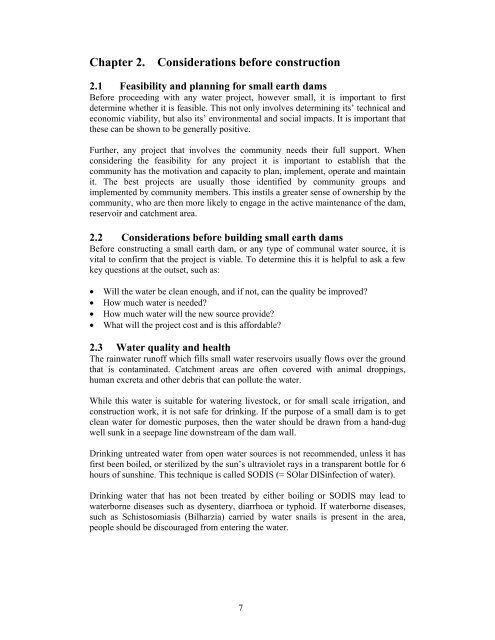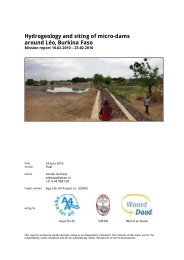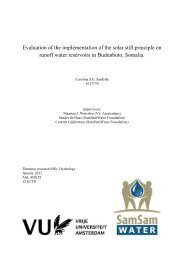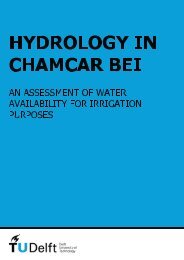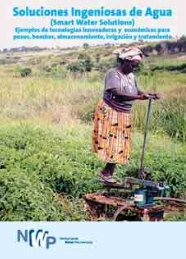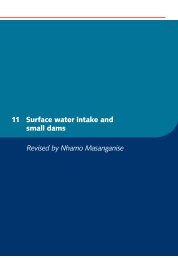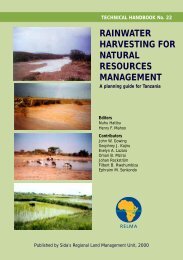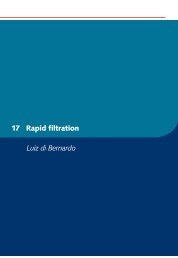Water from Small Dams
Water from Small Dams - SamSamWater
Water from Small Dams - SamSamWater
You also want an ePaper? Increase the reach of your titles
YUMPU automatically turns print PDFs into web optimized ePapers that Google loves.
Chapter 2.Considerations before construction2.1 Feasibility and planning for small earth damsBefore proceeding with any water project, however small, it is important to firstdetermine whether it is feasible. This not only involves determining its’ technical andeconomic viability, but also its’ environmental and social impacts. It is important thatthese can be shown to be generally positive.Further, any project that involves the community needs their full support. Whenconsidering the feasibility for any project it is important to establish that thecommunity has the motivation and capacity to plan, implement, operate and maintainit. The best projects are usually those identified by community groups andimplemented by community members. This instils a greater sense of ownership by thecommunity, who are then more likely to engage in the active maintenance of the dam,reservoir and catchment area.2.2 Considerations before building small earth damsBefore constructing a small earth dam, or any type of communal water source, it isvital to confirm that the project is viable. To determine this it is helpful to ask a fewkey questions at the outset, such as:• Will the water be clean enough, and if not, can the quality be improved?• How much water is needed?• How much water will the new source provide?• What will the project cost and is this affordable?2.3 <strong>Water</strong> quality and healthThe rainwater runoff which fills small water reservoirs usually flows over the groundthat is contaminated. Catchment areas are often covered with animal droppings,human excreta and other debris that can pollute the water.While this water is suitable for watering livestock, or for small scale irrigation, andconstruction work, it is not safe for drinking. If the purpose of a small dam is to getclean water for domestic purposes, then the water should be drawn <strong>from</strong> a hand-dugwell sunk in a seepage line downstream of the dam wall.Drinking untreated water <strong>from</strong> open water sources is not recommended, unless it hasfirst been boiled, or sterilized by the sun’s ultraviolet rays in a transparent bottle for 6hours of sunshine. This technique is called SODIS (= SOlar DISinfection of water).Drinking water that has not been treated by either boiling or SODIS may lead towaterborne diseases such as dysentery, diarrhoea or typhoid. If waterborne diseases,such as Schistosomiasis (Bilharzia) carried by water snails is present in the area,people should be discouraged <strong>from</strong> entering the water.7


